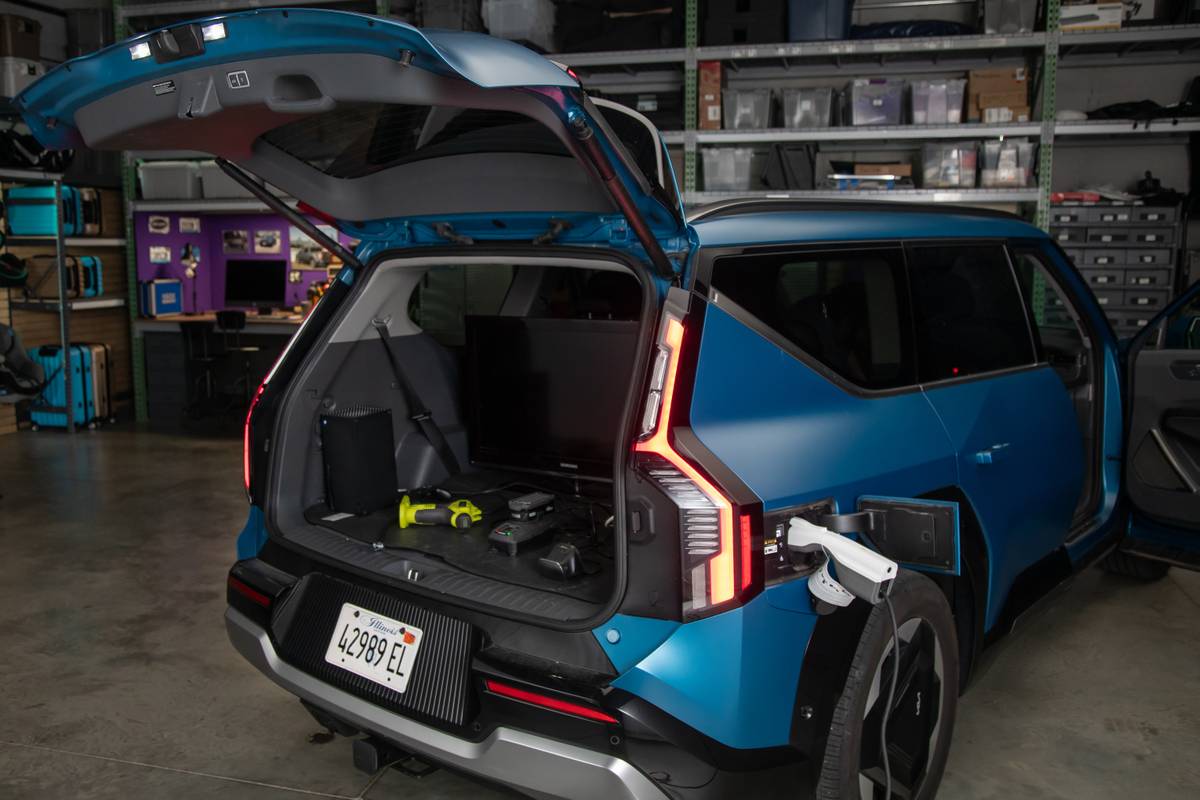The Morning Call and Mcall.com's view
With the sport utility market reaching a fever pitch in sales, it’s not too surprising to see the assorted sizes of SUVs.
Small sport utes have always been around with the Jeep Wrangler having established the field.
But recently, Japanese automakers have entered the fray with car platforms being used underneath a sport ute body. This answers most of the needs of the current craze for sport utes, since most buyers want the go-anywhere image and foul-weather traction coupled with a car-like ride.
That’s what sets the Suzuki-built Chevrolet Tracker apart from its Asian competitors, the Honda CRV and Toyota RAV-4. The Tracker really can go off-road.
It has body-on-frame construction and a dual-range part-time four- wheel-drive system. Drivers can shift in and out of four-wheel-drive at speeds up to 60 mph. So, this is no sheep in hiking gear.
There’s a drastic improvement in the Tracker, all-new for 1999. It’s available as a two- or four-door, the test vehicle being the four-door.
The exterior bulges purposefully, making the truck seem larger than it actually is. (It measures 151.8- inches long, shorter than a VW New Beetle or Golf).
mounted spare tire. The overall effect, while not exactly handsome, is not exactly hideous either.
Engineers have endowed this buggy with full ladder frame, and models with the larger engine get an anti-flex bar under the hood. This gives the truck a much more solid feel than its predecessors. Some trembling can still be felt through the steering wheel while traversing the craters that dot the roads of Pennsylvania.
Performance isn’t this vehicle’s strong suit, but with the exception of the Wrangler, that’s true for the class. Standard on the four-door is a 2-liter 16-valve double-overhead- cam four-cylinder engine with 127 horsepower and 134 pound-feet of torque. While this makes for a nice economy car engine, even the larger engine seems taxed to move the Tracker’s 2,891 pounds with any authority.
The additional power helps when entering a highway. The Tracker’s mill makes more noise than power, with little torque at low speeds. But this engine seems quieter than previously and the overall racket from road and tires seems to be lower as well.
Power steering is light and quick enough. The Tracker’s cornering behavior is typical, it keels over in corners. The suspension does a better job of absorbing the rough stuff than previously, although there is still some pitching. But it’s predictable.
A five-speed manual or four-speed automatic are offered. The test vehicle has an automatic with power and economy modes. The test vehicle had the latter. The power economy switch proved to be a mixed blessing. When in the power mode, each shift is held longer, allowing for more engine noise. When it came time to shift, the gearbox jerked into gear. Switching into econom y mode made the beast much more civilized, without any discernable decrease in power.
Braking is typical front disc/rear drum, with anti-lock available as an option. Braking proved sufficient, although after a day of stop-and-go driving, there seemed to be some fade.
Overall, performance, while not quick or sporting (typical of SUVs), seemed quite a bit more refined than older Trackers.
That’s especially true inside. Noise and vibration were adequately suppressed. The interior was nicely laid out and easy to operate. Despite having 8 inches of ground clearance, it was easy to climb into without running boards. The seats are firm and gave good support without any pain after long drives. The steering tilts, power windows/locks/mirrors and A/C are all available. The center console has a lot of little nooks and crannies to store things. But there’s no center armrest.
Some interior material felt inexpensive, not surprising in a four- wheel-drive vehicle that starts at $15,000. But the door handles are outright flimsy and seem destined to break before the payment book runs out.
Rear seat room didn’t seem like much at first glance, considering this vehicle’s length. But it proved adequately roomy. The seat folds down for extra cargo space.
The EPA gives the four-door automatic Tracker a better rating than its manually equipped cousin. Its 23 mpg city rating goes one better, although they’re evenly matched at 25 mpg on the highway. Test mileage yielded merely 20 mpg.
If you don’t mind the poky engine, this is a nifty little truck that nimbly roves around town while able to beat the bush as well.
A few years ago, Chevy had no problem selling these as Geos. But with the Geo name consigned to the ashbin, it’s now a Chevy and already has a rebate on it. Too bad. For this is an enjoyable little truck.
1999 Chevrolet Tracker four- door
Engines: 2-liter DOHC 4-cylinder. Transmissions: Five-speed manual or four-speed automatic Tires: P205/75R-15 (four doors) Standard: Dual air-bags, full carpeting, center console with power outlet, rear window defogger, floor mats, rear-seat heat ducts, split- folding rear seats, AM/FM stereo radio, variable intermittent wipers , dual outside remote adjusting mirrors, fuel tank skid plate, recovery hooks, power rack-and-pinion steering, two-speed shift-on-the-fly transfer case. Base price: $15,935 As tested: $20,886 EPA rating: 23 mpg city, 25 mpg highway Test mileage: 20 mpg
Latest news



